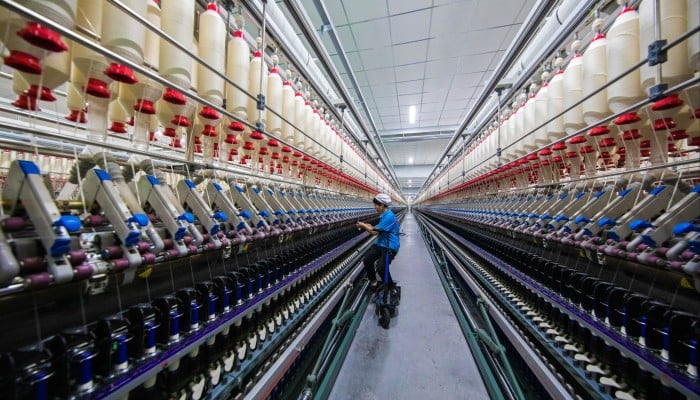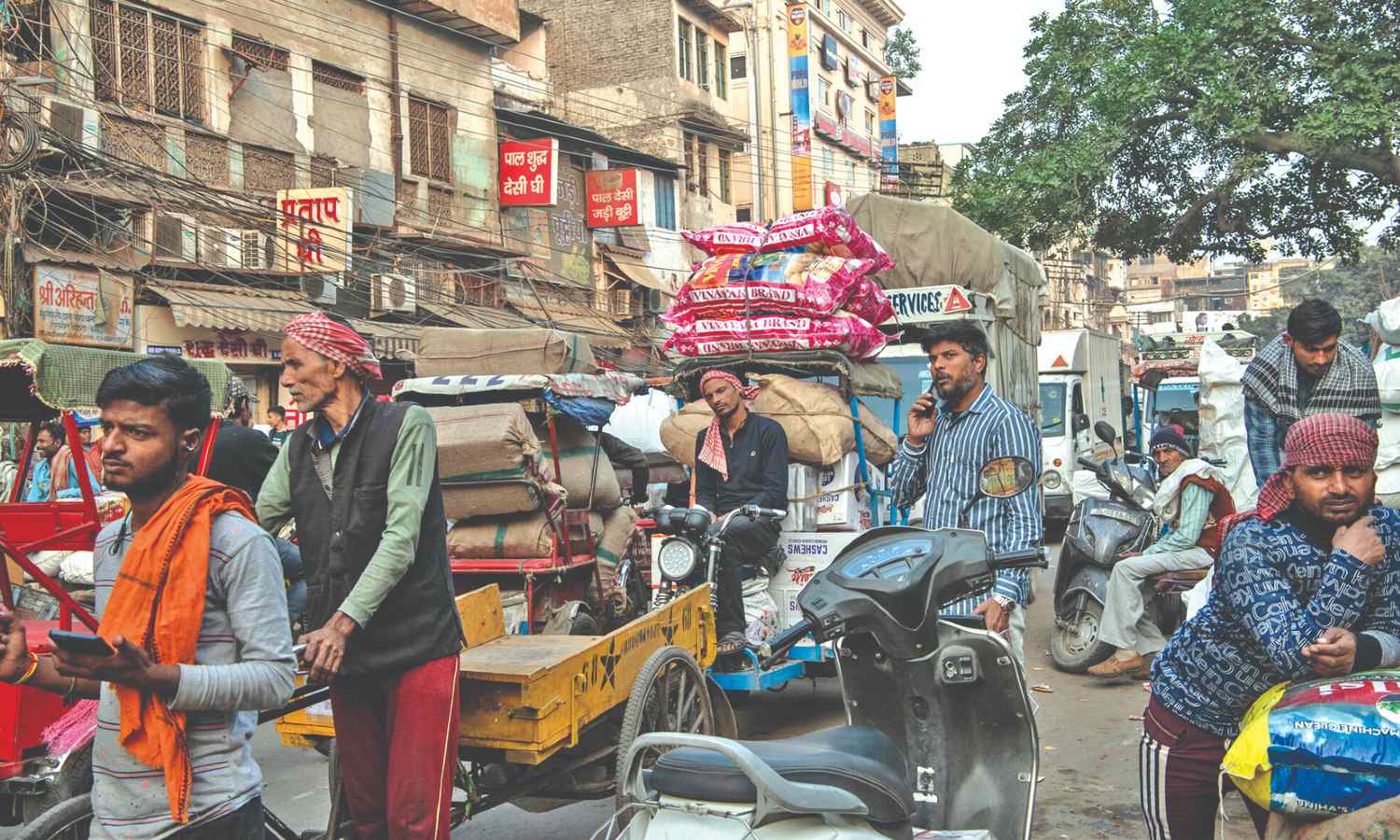FW
Cotton mills across Maharashtra owe the government as much as Rs 1,700 crores. The government has recovered only Rs 73.61 crores of the Rs 1,748 crores that had been released towards share capital over the last two decades. Ironically most of the mills are under leaders from political parties.
Though 130 societies sought funding as share capital to set up the mills, 29 of them have gone for liquidation, while three have been shut down. Twenty four of them are still under construction, while only 34 of them are running. The government has failed to recover the dues due to the political patronage the mills enjoy. The mills are expected to start paying back as soon as production starts. To avoid repayment, some mills do not draw the last installment of government share. Some of them have recruited excessive manpower while in a few cases the management has paid an exorbitant price to make the business unfeasible.
The state government extends a share capital of 45 per cent to cotton mills set up on a cooperative basis by the board of directors in general categories. Given the state’s poor finances and ballooning debt, the government has now decided to review its norms for recovery of the dues.
India’s export of 100 per cent man-made fibre yarns was at 5 million kg in November. It comprised 2.28 million kg of polyester yarn, 2.15 million kg of viscose yarn and 0.59 million kg of acrylic yarn.
Exports of polyester yarn were down 9.9 per cent in value while the value of exports of viscose yarn rose 67.7 per cent during the month. Exports of acrylic yarn declined 28 per cent in November. Unit price realization was down US cents 6 a kg for polyester from a year ago and that of viscose yarn fell US cents 35 a kg. On the other hand, unit price realization of acrylic yarn grew US cents 50 a kg year-on-year basis.
Polyester spun yarns were exported to 34 countries in November aggregating $5.2 million with unit price realization averaging $2.29 a kg. On the whole, a total of 2.28 million kg was exported. Of this, 25.5 per cent was shipped by Turkey alone. Five new destinations were found for polyester yarn in November. Of this, Mexico, Dominican Republic and South Korea were the major ones.
Only 38 representatives — not a big number — from the huge global fashion industry attended a summit held at the UN Climate Change Secretariat in Bonn, to evaluate the possibility of a joint future climate action programme. The two-day agenda mainly focused on global collaboration in the fashion sector to look at methodologies to enable a significant shift towards putting together a larger, joint environmental project. Brands including Adidas, C&A, Hugo Boss, H&M and FIlippa K attended the summit along with representatives from textile manufacturers, recycling associations and fibre innovators.
Environmental targets, an online platform to open dialogue and enhance engagement with policy makers at the national and international level, were key aspects of the agenda across the two-day United Nations Framework Convention on Climate Change (UNFCCC) event.
One of the most significant aims of the initiative is to engage more organisations in these discussions. The next step will be preparation and execution of a report by the UN Climate Change Secretariat to share with stakeholders in the fashion sector. The UN hopes this report can be a catalyst in beginning a global climate action programme to integrate existing environmental initiatives within the fashion industry.
Mistra Future Fashion’s Sigrid Barnekow was the moderator for the panel discussions, along with the UNFCCCs executive secretary and manager for Strategy & Relationship: Patricia Espinosa and Niclas Svenningsen. In her role as moderator, Patricia said, “I believe we stand at a turning point in history. For the first time, humans are no longer just affected by weather cycles, we are affecting those cycles and suffering the consequences of doing so.”
Mistra was of the view that total greenhouse gas emissions from textile industry production is estimated to be 1.2 billion tonnes per year, which is believed to be more than all international flights and maritime shipping combined. Niclas highlighted the fact that to agree on such a program, all parts of the fashion system needs to be taken in consideration, “The fashion sector has a huge challenge, complex supply chains from primary producers to retail shops and fast-growing demand with limited recycling.”
Knit-Tech, a well known International brand in the International Textile Machinery Expo Industry is owned by a Tirupur-based company Hi-Tech International Trade Fair (India).
The brand’s very first expo Knit-Tech 1993, an international textile and knitting machinery expo was very successful during the UPA government. The expo created awareness and a revolution of sorts in the knitting and textile industry of South India.
After that, Hi-Tech International Trade Fair India, has been conducting a series of exhibition once every two years. It has been successful in a big way by bringing latest machinery, technologies, concepts, services from all over the world. Normally, more than 100 participants from overseas including US, Europe, Singapore have been regularly participating in all events along with their latest developments.
Knit-Tech is a reliable, strong, dynamic, established platform for overseas manufacturers of textile machinery to showcase their products to the right clients in a economical way. By this, they could promote their identity globally. As of now Knit-Tech has conducted 13 international events that attracted more than two lakh business visitors from all over India and neighbouring countries like Sri Lanka, Nepal, Bangladesh and Bhutan. These expos generated business worth $300 million.
As production in spinning mills has come to a grinding halt since demonetisation, sales of yarn in western Tamil Nadu have plummeted. As a consequence, yarn stocks are piled up in city mills most of which rely on migrant labourers who have stopped work.
With shortage of labour, owners of spinning mills are unable to run their units on a daily basis. As a consequence, the number of shifts has come down to two or one per day. With inadequate workforce, mills are unable to carry out production to the capacity. This has resulted in piling up of yarn stocks. On any given time, most big spinning mills have stocks of 15 to 30 days. Now, it has piled up to three or four months.
The loss incurred due to the fall in production has doubled. The textile industry has been facing a dull market in the past two years. Yarn exports have come down as a result of which it has been a loss of anywhere between 15 to 25 per cent as compared to the business two years ago.
The Bangladesh’s garment-making sector has rebounded so strongly following the Rana Plaza disaster that the country’s economists and labour leaders are warning it could hold back the country’s economy as a whole. Nearly four years after the Rana Plaza collapse in Dhaka where more than 1,100 garment workers were killed western clothing companies are seen buying more from Bangladeshi factories like before.
While the booming garment industry is contributing to an overall growth rate of 7 per cent, economists feel it is suppressing wages and crowding out higher value sectors. As economics professor at Dhaka University, Rashed al Mahmud Titumir says there is no diversity in the economy. Bangladesh has not been able to produce more lucrative products and there are barely any exports except readymade garments.
As per Bangladesh Garment Manufacturers and Exporters Association, in fiscal 1983-84 Bangladesh garment sales abroad was around 3.9 per cent of its total exports worth $31.6 m. By 1989-90 it rose to 32 per cent, worth $624.2 m. At the time of the Rana Plaza collapse, the country’s worst industrial disaster garment exports had reached 80 per cent or $21.5 bn. Despite the tragedy, the sector has continued to grow, hitting $28.1 bn in the last financial year and accounting for 82 per cent of total exports.
Industry representatives say continued growth is the result of unprecedented action taken in the aftermath of the disaster. In the year after the Rana Plaza incident, the number of clothing factories in Bangladesh shrank by 1,654 — 615 of which were related to the new safety measures. More than 200 foreign brands have signed up to two different safety schemes, the Bangladesh Accord on Fire and Building Safety and the Alliance for Bangladesh Worker Safety and have promised to spend tens of millions to improve factories.
The Pakistan Textile Exporters Association (PTEA) has strongly condemned the fictitious representatives of the textile industry and said non-stakeholders are ruining the government’s efforts for revival of ailing textile industry by placing unproductive and baseless proposals. Referring to the statement of the Council of All Pakistan Textile Associations chairman, Zubair Motiwala, PTEA Chairman Ajmal Farooq and Vice Chairman Muhammad Naeem termed it highly unfortunate that some outsiders without any link with textile industry are misleading the government with their baseless suggestions and sabotaging the efforts of the revival of the textile sector.
These elements are against the revival of the country’s major export industry and are playing just for their own vested interests, the three added. Industries in Sindh are paying Rs 488 per mmbtu for system gas whereas industries in Punjab are paying Rs900 per mmbtu for RLNG. In such circumstances, how could Punjab industry compete, they asked.
They added the government is moving in the right direction for uplifting exports and consideration of custom rebate and cash subsidies is a positive move which will not only help restore the competitiveness of textile industry in international market but would also revive the substantial capacity to produce exportable surplus they added.
Farooq feels competing countries like Bangladesh, India, China and Vietnam are rapidly multiplying exports because of their edge in cost of doing business and incentives offered by governments. High cost of production and un-competitiveness are major hurdles in export growth and pragmatic incentive schemes need to be announced to reduce the cost of production and create a level playing field, he suggested.
In the wake of Brexit, the Mauritius government will launch the Air Freight Rebate scheme known as the 'Speed-to-Market' Scheme (STMS) for its textile and apparel sector. The launch is taking place after due consultations with various stakeholders. STMS will also allow Mauritian textile and apparel exporters to become more competitive in comparison to other countries exporting via air freight to Europe.
The scheme is expected to enhance competitiveness of Mauritian exports in the European market, especially in speed of delivery while providing support to the textile and apparel enterprises facing difficulties due to Brexit. The STMS which will be applicable to the textile and apparel manufacturing companies only, will among others; provide a 40 per cent refund on air freight cost to exporters to Europe including UK; be time-bound for 2 years; and will be operated and managed by Enterprise Mauritius. The refund will be applicable for exports as from 1st April 2017.
The STMS scheme for textile and apparel was announced in the Budget speech 2016-17 by the minister of finance and economic development of Mauritius. Mauritius is the largest African clothing exporter to America and Europe.
Though local business community still has concerns, Pakistan seems to have placed a lot of faith in the game-changing China-Pakistan Economic Corridor (CPEC). Stakeholders in the textile sector are anticipating a further decline. This because they fear if Chinese companies started relocating their textile units in different tax-free industrial zones in Pakistan, they would go out of business.
According to Pakistan Readymade Garments Manufacturers and Exporters Association (PRGMEA) senior vice president Jawad Choudhry, whenever China enters any country it damages the domestic market. He said the industry is currently facing a decline trend due to the high cost of doing business and productivity, whereas China plays with the price by increasing its production.
Experts believe if China locates its textile units to Pakistan they will have an edge over the existing players due to the benefits, such as tax-free zones, under CPEC. An additional benefit for them would be the energy prices as they are setting up their own power plants to feed their industries in Pakistan.
Yarn coming out of mills in Tamil Nadu has dwindled. Reason: the currency ban. Migrant laborers are unable to come to work because they don't have bank accounts. Opening a bank account is an issue as they do not have identity proofs. Many of them have returned to their hometowns and will come back only when there is sufficient cash flow in the market.
With shortage of labor, owners of spinning mills are unable to run their units on a daily basis. The number of shifts has come down to two or one per day. With inadequate workforce, they are unable to carry out production to capacity. Losses incurred due to fall in production have doubled. Yarn exports have come down.
With a fall in yarn supply, weaving units have also shrunk their output. Most weaving units have temporarily closed. They only function two or three times a week or may be for festivals or important orders.
Also powerloom owners have not been able to provide full wages to their weavers and others in the industry due to demonetisation. As it is the textile industry in Tamil Nadu has been having dull business for two years.












